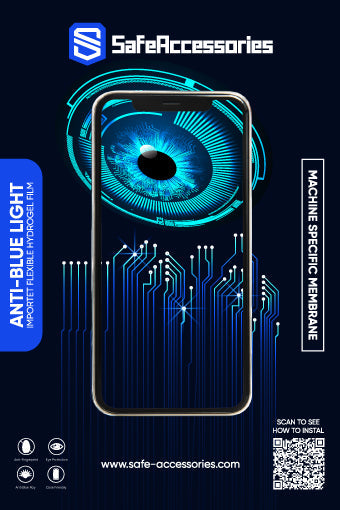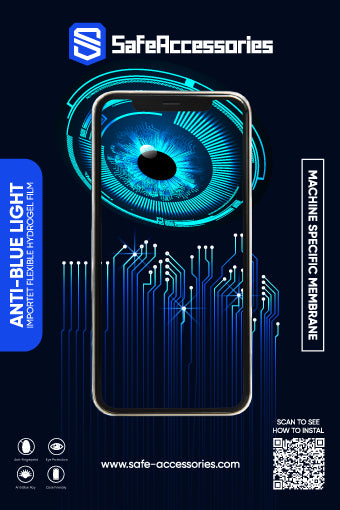¿Son seguros los tratamientos para la piel con radiofrecuencia, láser y luz LED?
Compartir
El envejecimiento es inevitable y nuestra piel lo demuestra muy bien. Desde arrugas hasta flacidez, manchas solares y textura irregular, la capacidad de nuestra piel para regenerarse disminuye a medida que envejecemos. Pero con el auge de los tratamientos cutáneos no invasivos, surge la pregunta: ¿son realmente seguros estos tratamientos cutáneos basados en energía, como la radiofrecuencia (RF), el láser y la luz LED?

La ciencia detrás del envejecimiento de la piel
Nuestra piel contiene células especializadas que producen colágeno y elastina, componentes clave para mantener la piel firme, tersa y joven. Después de cumplir los 20 años, nuestra producción de colágeno disminuye, al tiempo que disminuyen la grasa, los niveles de estrógeno y la hidratación de la piel. Como resultado, la piel se vuelve más fina, más seca y más propensa a las arrugas y a los daños.
La locura de las celebridades por los tratamientos no invasivos para la piel
Celebridades como Kim Kardashian, Jennifer Lopez y Victoria Beckham apuestan por los tratamientos no quirúrgicos para mantener una apariencia juvenil. Estos métodos no requieren cirugía y suelen ser alternativas más rápidas y menos dolorosas. A la vanguardia están los tratamientos basados en energía que utilizan varias longitudes de onda de luz y sonido para estimular la regeneración de la piel.
Pero ¿qué son exactamente estos tratamientos y son seguros?
Tipos de tratamientos para la piel basados en energía
Existen varios métodos populares de rejuvenecimiento de la piel que utilizan diferentes tipos de energía, entre ellos:
- Tratamientos de la piel con radiofrecuencia (RF)
- Rejuvenecimiento cutáneo con láser
- Fototerapia LED
Cada uno utiliza diferentes longitudes de onda para apuntar a capas específicas de la piel y cada uno tiene diferentes perfiles de seguridad.
Tratamientos de radiofrecuencia (RF)
Los tratamientos de radiofrecuencia utilizan radiación de baja energía (entre 0,3 y 10 MHz) para calentar las capas medias de la piel. Esto estimula la producción de colágeno, reduce la grasa y tensa la piel. Es popular para tratar las arrugas, la celulitis y la flacidez de la piel en el rostro y el cuerpo.
¿Es segura la radiofrecuencia? Los tratamientos de radiofrecuencia son generalmente seguros cuando los administra un profesional autorizado. Los efectos secundarios son poco frecuentes, siendo los más comunes la hinchazón y el enrojecimiento temporales. El procedimiento no emite radiación dañina de alta frecuencia, lo que lo convierte en una opción segura para la mayoría de los usuarios. Sin embargo, las mujeres embarazadas deben evitar los tratamientos de radiofrecuencia, ya que no están claros los efectos sobre los fetos en desarrollo.
Terapia de luz LED
Los tratamientos con LED utilizan energía lumínica no térmica y no invasiva para tratar una variedad de problemas de la piel. Los tipos más comunes son:
- Terapia de luz roja : estimula la producción de colágeno y reduce la inflamación.
- Terapia de luz azul : ataca las bacterias que causan el acné y reduce los brotes.
- Terapia de luz verde : unifica el tono de la piel y reduce la pigmentación.
Originalmente desarrollados por la NASA para la curación de heridas, los tratamientos con LED ahora se utilizan ampliamente con fines estéticos, ayudando con el acné, la textura de la piel y el antienvejecimiento.
¿Es segura la terapia con luz LED? La terapia con luz LED es uno de los tratamientos no invasivos más seguros que existen. Como no genera calor, evita muchos de los riesgos asociados a otros tratamientos. Las ondas de luz penetran la piel pero no provocan daño térmico y los estudios no han demostrado efectos nocivos a largo plazo.
Rejuvenecimiento cutáneo con láser
Los tratamientos con láser, tanto ablativos como no ablativos, utilizan luz infrarroja para tratar problemas de la piel. Los láseres ablativos eliminan las capas superiores de la piel para tratar las arrugas y cicatrices más profundas, mientras que los láseres no ablativos calientan la piel para estimular el colágeno sin eliminar ninguna capa.
¿Es segura la terapia con láser? Si bien los tratamientos con láser son más invasivos que las terapias con radiofrecuencia o LED, se consideran seguros cuando los realizan profesionales experimentados. Sin embargo, los efectos secundarios pueden incluir hinchazón temporal, enrojecimiento y, en casos excepcionales, cicatrices o cambios en la pigmentación. Los láseres ablativos, en particular, pueden requerir períodos de recuperación más prolongados.
¿Son estos tratamientos seguros para uso a largo plazo?
Aunque estos tratamientos son seguros si se utilizan correctamente, aún no se conocen del todo los efectos a largo plazo de sesiones repetidas durante muchos años. Como ocurre con cualquier forma de radiación o exposición a la luz, la moderación y la supervisión profesional son fundamentales. Los tratamientos como la radiofrecuencia y el láser, que generan calor, deben realizarse siguiendo protocolos estrictos para evitar cualquier riesgo de daño tisular.
¿Debería considerar estos tratamientos?
Si busca métodos no invasivos para rejuvenecer su piel, estos tratamientos pueden ser eficaces y, en general, seguros. Sin embargo, como con cualquier procedimiento cosmético, consulte con un profesional para que evalúe su tipo de piel y su estado de salud y determine qué tratamiento es el más adecuado para usted.
Ya sea que estés luchando contra las líneas finas o buscando una piel más suave, asegúrate siempre de que los procedimientos los realicen expertos capacitados. Además, considera proteger tu piel de las exposiciones cotidianas dañinas, como la radiación EMF de los dispositivos móviles, utilizando accesorios de protección EMF.
Conclusiones clave:
- Los tratamientos con RF, láser y LED son populares para el rejuvenecimiento no invasivo de la piel.
- Los tratamientos de RF estimulan el colágeno y reducen la grasa a través de la energía térmica.
- La terapia LED utiliza luz no térmica para promover la curación y reducir el acné.
- Los tratamientos con láser son más invasivos pero efectivos para las arrugas y cicatrices más profundas.
- Generalmente todos los tratamientos son seguros, pero es fundamental consultar con un profesional para evitar complicaciones.
El mundo del cuidado de la piel está avanzando rápidamente, pero la seguridad siempre debe ser lo primero.


